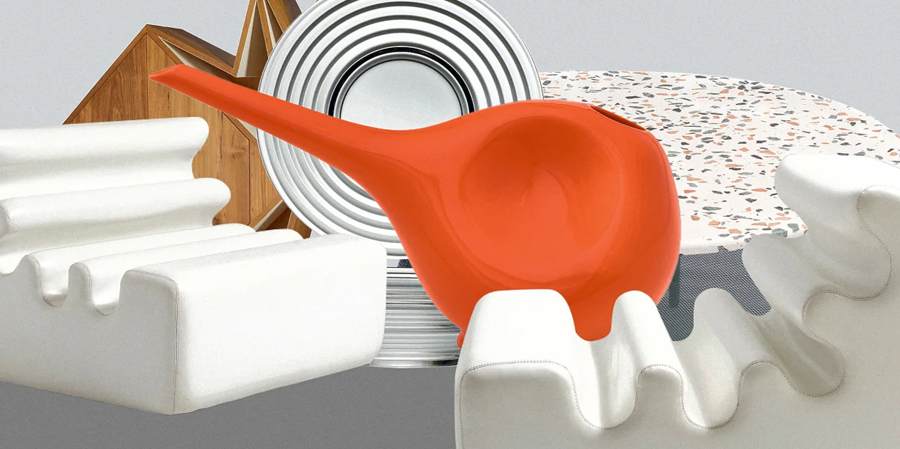The new book ‘Woman Made’ is here to shatter all your stereotypes about women in design
What does a piece of furniture that is designed by a woman look like? Whatever stereotypes you can think of, a new book is here to shatter them.
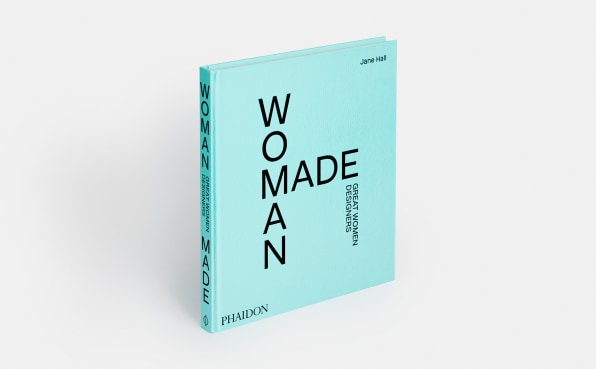
Phaidon has just released its most comprehensive book on women designers ever published. Woman Made: Great Women Designers binds together over 240 women and their contributions to the design world from the mid 19th century until today, including products designed under lockdown last year. Featuring everyone from modern design icons like the late Zaha Hadid to overlooked figures, like the Filipino interior designer Mercedes “Ched” Berenguer-Topacio, the book presents a multifaceted definition of design where gender may be a common denominator, but it isn’t the defining feature.
Women make up more than half of the designers today, but as of 2019, they only hold 11% of leadership roles in the design field. Woman Made is part of a recent movement to recognize the role women have played, and continue to play, in shaping the world we live in. In the design sphere, which has disproportionately been dominated by men, it suggests that feminine design is less about a particular look or a style—and more about design with a purpose, be it social, cultural, or environmental.

With products that range from furniture and textiles to homeware and lighting, the book chronicles an array of products that were designed specifically for the home—a place that has been fraught with gender stereotypes for centuries. “The home is a contested space that is often framed by gender,” says the author Jane Hall, a founding member of the London-based, prize-winning architecture collective, Assemble. Woman Made addresses this stereotype head-on by using the home as a catalyst to explore women’s pivotal roles in design throughout the 20th century. In the early 1900s, she says, the home was the center of domestic life. Then, as women around the world slowly won the right to vote, they gained a bigger role in society, and the home became a more dynamic space.
For Hall, the home has often been a “showroom” for everything from efficiency to hygiene to communal living. In 1926, for example, the Austrian architect Margarete Schütte-Lihotzky designed the now-iconic Frankfurt kitchen. Considered to be a precursor to the modern kitchen, it featured an electric stove, a window over the sink, and lots of built-in storage. “It didn’t emancipate women from that role they had [in the kitchen], but it tried to make them more efficient at doing it,” Hall says. “It’s weirdly anti-feminist but, for once, someone was thinking about women’s lives.”
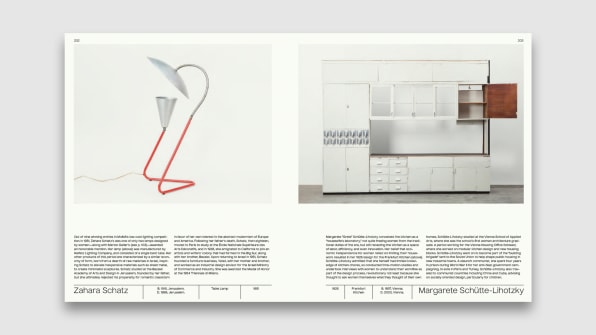
Women weren’t just instrumental in shaping western homes, they also influenced domestic spaces worldwide. And Woman Made spotlights designers, and their designs, from all four corners of the world. In the Philippines, Berenguer-Topacio was one of the country’s first interior designers in the 1950s and ran a successful furniture business for over 50 years (her Klismos chair used locally sourced woven cane). In Abu Dhabi, Baghdad-born designer Rand Abdul Jabbar has been promoting traditional crafts that aren’t dominated by a western influence. Her sculptural Forma furniture series from 2015 sheds light on the disappearing craft of traditional dhows (a type of sailing boat) and was fabricated in collaboration with local boatbuilders.
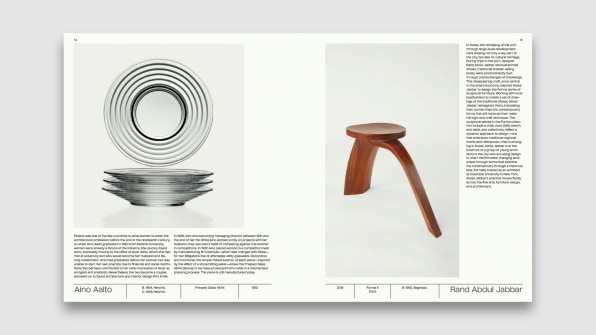
Over the past century, women designers have been at the forefront of innovation, pushing the envelope with new materials and techniques. One of the oldest pieces of furniture highlighted in the book is Eileen Gray’s Bibendum chair, from 1926. One of the most recent pieces is the Sport sofa, which Monling Lee of design studio Jumbo designed last year during lockdown. Much has changed in between. In the ’20s, designers like Russian-born Belle Kogan (often referred to as the godmother of industrial design in the United States) were working with metal and using modern techniques. In the 1960s, it became all about plastics. “Most of them had patents,” says Hall.
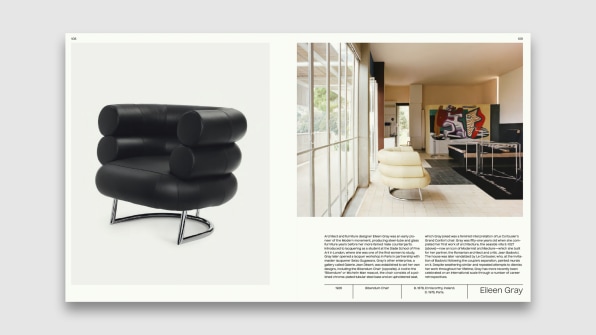
In recent years, women have been leading the charge on sustainability, too. “Today, people are interested in a return to craft,” says Hall, who has noticed a marked desire to design affordable products with traditional skills using industrial technology. “Everyone I spoke to, who’s in their 20s and 30s, is really interested in materiality, and thinking about climate and consumption, and I think that’s a real issue for designers,” she says, noting the tension between “making stuff” and reconciling that with limited resources and sustainability.
Regardless of the era, not a single product featured looks or feels particularly “feminine.” Forget curvy details and pink shades. “The idea of the female aesthetic is quite problematic,” Hall says. The common thread here is not gender, it is what she calls a “feminist design methodology,” which can be defined as an all-round effort to design products that are sustainable, rooted in cultural traditions, and accessible to all. Hall points to Danish industrial designer Karin Schou Andersen, whose 1979 flatware collection was developed to support a range of individual impairments from sports injuries to arthritis.
Ultimately, the book is less about making women more visible and more about making marginalized identities more visible through design. Perhaps women excel at this precisely because they’ve been marginalized for so long. Regardless, Woman Made seeks to prove, once and for all, that the world we live in is decidedly woman-made
…
This article first appeared in www.fastcompany.com
Seeking to build and grow your brand using the force of consumer insight, strategic foresight, creative disruption and technology prowess? Talk to us at +971 50 6254340 or mail: engage@groupisd.com or visit www.groupisd.com/story

